#hans heinrich müller
Text

Umspannwerk Buchhändlerhof (1924-28) in Berlin, Germany, by Hans Heinrich Müller
#1920s#utilitarian architecture#brick expressionism#expressionist#architecture#germany#berlin#hans heinrich müller
626 notes
·
View notes
Photo

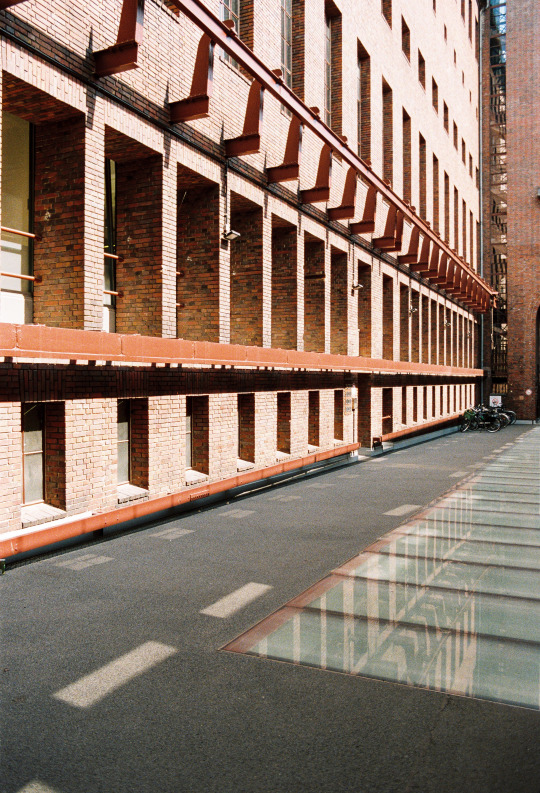
former abspannwerk kottbusser ufer // berlin kreuzberg
architect: hans heinrich müller
completion: 1926
the former substation was in operation from its opening in the 1920s until 1989. because of its architecture, the plant used to be called the cathedral of electricity.
after it was shut down, it was completely renovated from 1999-2001. In the meantime, it has become an office and event location with a variety of uses.
camera: exa 1b, 50mm carl zeiss tessar
film: kodak portra 800
dev&scan: meinfilmlab
#kodak portra#kodak portra 800#analog#analog film#35mm#exa 1b#abspannwerk kottbusser tor#hans heinrich müller#new objectivity#neues bauen#neue sachlichkeit#expressionism#expressionist architecture#design#photograpy#architecture#architecture photography#urban#urban photography
43 notes
·
View notes
Photo

Hans am Ende
“Gänseblümchenparade”, from left to right: Heinrich Vogeler, Fritz Overbeck, Hans Müller-Brauel (archaeologist and local historian), Fritz Mackensen, Otto Modersohn und Hermann Allmers (writer)
1895
#Hans am Ende#photography#1895#Worpswede#artists' colony#Germany#Heinrich Vogeler#Fritz Overbeck#Hans Müller-Brauel#Fritz Mackensen#Otto Modersohn#Hermann Allmers#history#artists
51 notes
·
View notes
Text

E-Werk, Berlin. Architect: Hans-Heinrich Müller. Photo: Matthias Heiderich
1K notes
·
View notes
Photo
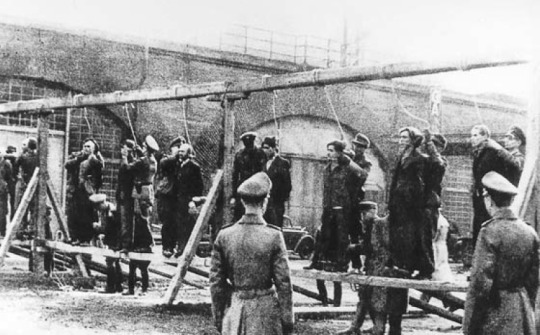
On this day, 10 November 1944 13 members of the Ehrenfeld anti-Nazi resistance group were hanged in the street in Cologne by the Gestapo. Those killed were named Hans Steinbrück, Gustav Bermel, Johann Müller, Franz Rheinberger, Adolf Schütz, Bartholomäus Schink, Günther Schwarz, Roland Lorent, Peter Hüppeler, Josef Moll, Wilhelm Kratz, Heinrich Kratina and Johann Krausen. Steinbrück had escaped from a concentration camp and formed a resistance group based in the suburb of Ehrenfeld. He had stockpiled a number of weapons, and with others had shot several police officers. Six of those executed were working class youths, members of the nationwide underground group the Edelweiss Pirates, which was an anti-authoritarian alternative to the Hitler Youth. There were over 3,000 Pirates in Cologne alone, including Schink, who shirked at work, fought running battles with young Nazis, and carried out acts of sabotage against the military, like assassinating the head of the Cologne Gestapo. Learn more about the pirates and related groups in our podcast episode 4: https://workingclasshistory.com/2018/04/04/wch4-anti-nazi-youth-movements-in-world-war-ii/ https://www.facebook.com/workingclasshistory/photos/a.296224173896073/2131407660377706/?type=3
174 notes
·
View notes
Note
hi i have a little 18th century german boy oc and u r the only german person ik . i want to strike a deal . if u suggest German names i will give u cat pictures
A lil 18th century German oc? Oh boy oh boy those dudes had terrible names like Gerhard, Eberhard, Reinhard…lots of hard huh…
But here are a few German names (also a bit Nordic, cuz I’m a bitch living in the north and c’mon Hanse <33) which I believe to be rather timeless and free of the grandpa stamp:
-Hans
-Erik (also Eric)
-Anton
-Till
-Emil
-Mats
-Fiete
-Lars / Lasse
-Konrad (also Conrad)
-Fred
-Moritz
-Jannik (also Jannick, Yannic, Yannik, Yannick…)
-Gustaf (also Gustav)
-Arne
-Phillip (also Fillip)
-Finn
-Jakob
-Jan
-Nils
-Julius
(Not me searching through my followers on insta to look up my classmate’s names…👹)
Those would be a few that come to mind when I think of timeless names that guys had in the 18th century and today. When we think about 18th century people specifically, I just think of writers and artists of that time, like:
Johann Wolfgang von Goethe (<3) and his boyfriend
Friedrich Schiller,
Gotthold Ephraim Lessing,
Joseph von Eichendorff (<3),
Caspar David Friedrich (<3),
Heinrich Reinhold…etc. etc…
As most last names, Germany’s last names are an indicator for the occupation someone had (unless there’s a von, that means they’re nObLe), here are some examples:
-Schmidt
-Weber (hehe)
-Bauer
-Müller / Möller
-Koch
-Schneider
-Fischer
-Meier/Meyer
-Wagner
-Becker
-Hoffmann
-Schäfer
-Wolf
-Neumann
-Zimmermann
-Krüger
-Köhler
Etc. etc….
NOW GIVE ME THE CAT PICS 🔫
31 notes
·
View notes
Note
I demand to see the Katte board on your shelf :D
Sure :'D

It ain't much, but it's mine. Just moved them from the board, actually, that one was facing a window and I don't want these to get damaged by the light.
From left to right there is:
An entirely unrelated glass dome from IKEA with an old silver cup I got from my grandma and two Friech related coins, one D-Mark, one Euro (the dome is the most expensive part of this setup)
Burte's terrible, hilarious Katte play (funny music)
"King in Prussia", the one where nobody understands his connection to the Crown Prince 🥺
"Das Richtschwert traf den falschen Hals", aka "I love you so much, my Prince. Jk."
Zeithain. Oh Zeithain.
Actual acclaimed German author Theodor Fontane's "Wanderungen durch die Mark Brandenburg - Havelland", featuring his fictional one shot about baby Katte spending quality time with his dad. I want to get a copy of Oderland eventually (for the Küstrin chapter), preferably also this pretty edition (which only cost me a euro more than the ugly modern one)
Ahnert's "Friedrich und Katte", the one where Katte has A Terrible Beard
A short amateur biography about Katte's father that I got in Wust. Hans Heinrich is quite the personality and I'd love to find out more about him too.
A collection of letters by European monarchs concerning the trial of 1730
A brochure I got in Wust that includes info about the church and the Kattes ("Hans Hermann's first ever letter was to his Engelsschwesterken", I NEED THAT SOURCE, also look at that k, we can see how he pronounced stuff!! 🥺) as well as some letters
Hinrichs' "Kronprinzenprozess", primary sources printed in a particularly exhausting to read Fraktur
Kloosterhuis' "Katte. Ordre und Kriegsartikel", second edition with added list of Ingersleben's 50 teacups
"Schädel-Schicksale" which includes some details about Katte's (?) remains in Wust
"Kriegsgericht in Köpenick", another one of Kloosterhuis', wonderful exhibition catalogue that left me with many new questions (he built a cabinet???)
And a collection of the letters between FWI and Müller the priest that I also got from the nice people in Wust.
Oh. And a bust of Frederick William III. My friend 3d printed it as a surprise for my birthday; Friech wasn't available as a 3d model :'D
I bought all of these except Ordre und Kriegsartikel and the brochures used for a few bucks ^^ Richtschwert cost me a whopping 35 cents with two euros shipping :'D
There are a few more things that I'd like to add. Like "Sorrows of Frederick" (fridged wife Katte, my beloved), but the only copies I can find are in the US and only available if I pay by credit card - which I don't have :(
16 notes
·
View notes
Text
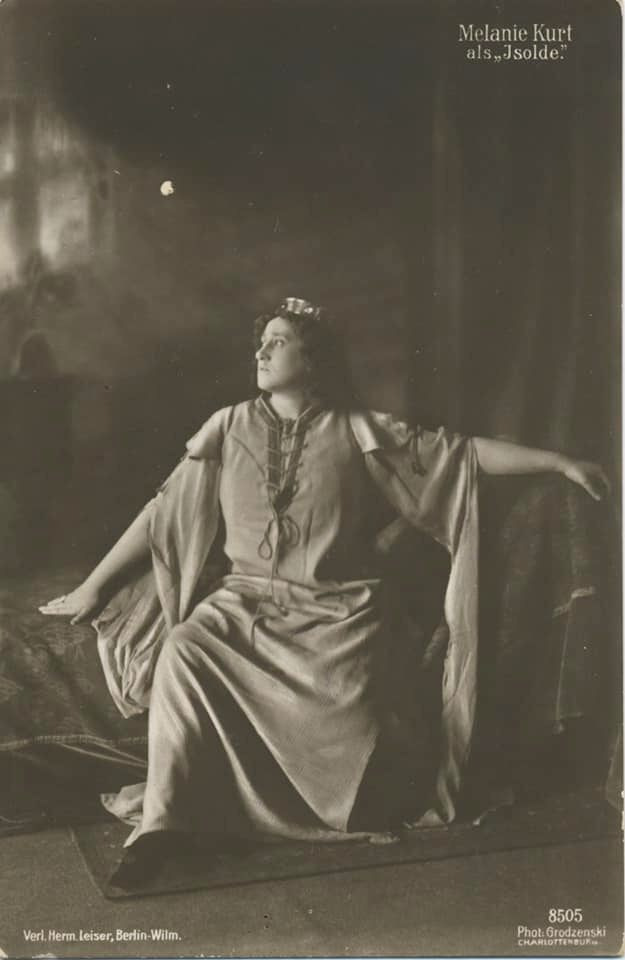
Here a picture of Melanie Kurt as Isolde.
Born on January 8th 1880 in Vienna, Melanie Kurt studied piano before her voice was discovered. Her singing teachers were Fanny Müller and Mari Lehmann, famous sister of the even more famous Lilli, Lehmann. In 1902 Kurt gave her debut as E1isabeth in "Tannhäuser" at the Stadttheater in Lübeck. In 1905 she moved on to Braunschweig and in 1908 arrived at the Berlin Court Opera. She became known internationally through her guest appearances at the London Covent Garden Opera as Sieglinde, in 1910 and later performances in Budapest, Dresden, Munich and several Italian Opera Houses. At the Salzburg Festival she sang together with Hermine Kittel and Lilli Lehmann the Three Ladies in "Die Zauberflöte". In 1913 she joined the ensemble of the just opened Deutsche Opernhaus Berlin, where she concentrated on dramatic roles: she was Berlin's first Kundry at the premiere at the Deutsches Opernhaus on January 1st 1914. Her contract with the Metropolitan Opera in 1915 can be considered the high point of the soprano's career. During those three years in New York she not only sang the dramatic Wagner-roles, but also mezzo roles, such as Fricka in "Rheingold", she was Amelia in "Un Ballo in Maschera" (with Enrico Caruso and Pasquale Amato), Marschallin in "Rosenkavalier", Iphigenie, Santuzza, Leonore ("Fidelio") and Pamina (in a cast which included Carl Braun and Frieda Hempel and saw as Tamino either Johannes Sembach, Jacques Urlus or Otto Goritz). In the programs of her MET concerts she also tried to include less familiar arias, such as the then only rarely performed Rezia aria from "Oberon" or Johanna's aria from the opera by Tschaikovsy. After the 1916/17 season most German singers, especially if they had focused their repertory on Wagner opera, left the MET: together with Margarete Arndt-Ober, Ernestine Schumann Heink, Johanna Gadski, Carl Braun, Otto Goritz, Johannes Sembach, Hermann Weiland Jacques Urlus Melanie Kurt left the United States in 1917. Kurt's last performance at the MET as Brünnhilde on March 28th 1917 (with Urlus, Braun, Reiss and Arndt-Ober) was at the same time the last "Siegfried" until 1923. After her return to Europe Melanie Kurt accepted no more long-term engagements but gave guest performances, especially in her much acclaimed Wagner roles, at all major European stages. She was the first Brünnhilde in "Siegfried" at the Waldoper Zoppot when the Festival was opened in 1922. The performance was conducted by the young Hans Knappertsbusch and the cast included Fritz Vogelstrom, Heinrich Knote, Werner Engel, Waldemar Henke, Desider Zador and Margarete Arndt-Ober. After having ended her singing career Melanie Kurt lived in Berlin and later in Vienna where she was active as a singing teacher. After the annexion of Austria by the Third Reich in 1938 she was able to leave her home country in time and emigrated to the United States where she died in New York on March 11th 1941.
#Melanie Kurt#Kurt#dramatic soprano#soprano#opera#bel canto#classical music#music history#classical singer#opera singer#classical singing#operatic soprano#operatic singing#operatic singer#composer#classical composer#richard wagner#wagner#tristan und isolde#aria#diva#maestro#prima donna#chest voice#Royal Opera House#covent garden#La Scala#The Metropolitan Opera#The Met#Metropolitan Opera
4 notes
·
View notes
Photo
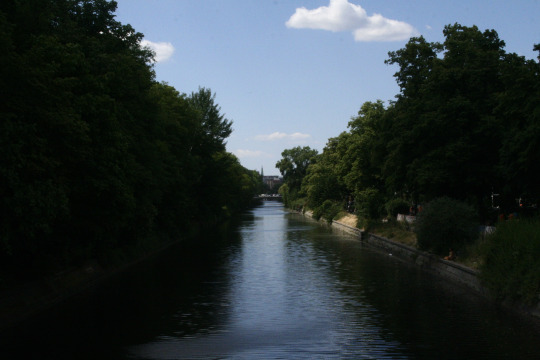

Ich bin heute beim Gebäude meines alten Büros im alten Rixdorf vorbei gegangen.
Das Gebäude am Richardstraße 20 war das Umspannwerk Neuköllns, wurde von Architekt Hans Heinrich Müller in dem frühen 20 Jahrhundert gestaltet und lange her unter Denkmalschutz gesetzt. Ich hatte da mein Archiv-Büro von 2013 bis 2015, bis heute jedoch steht das Gebäude leer.
0 notes
Photo

Marlene Dietrich and Emil Jannings in The Blue Angel (Josef von Sternberg, 1930)
Cast: Emil Jannings, Marlene Dietrich, Kurt Gerron, Rosa Valetti, Hans Albers, Reinhold Bernt, Eduard von Winterstein, Hans Roth, Rolf Müller, Roland Varno, Carl Balhaus, Robert Klein-Lörk, Károly Huszár, Ilse Fürstenberg. Screenplay: Carl Zuckmayer, Karl Vollmöller, Robert Liebmann, based on a novel by Heinrich Mann. Cinematography: Günther Rittau. Art direction: Otto Hunte. Film editing: Sam Winston. Music: Friedrich Hollaender
Josef von Sternberg's The Blue Angel still has some of the earmarks of a film made during the transition from silence to synchronized sound, namely the tendency to hold a shot a beat or two longer than is actually necessary, so the narrative doesn't always move along at the speed we anticipate. But Sternberg is clearly ready for sound, as the final scene shows. The camera tracks back from the dead professor, clutching his old desk so tightly that the caretaker who found his body has been unable to loosen his grip. Meanwhile, we hear the clock striking midnight, with the twelfth stroke barely audible as the screen fades to black. It's a touching moment, made possible by the several shots and sounds of the clock that occur through the film as a kind of indicator of Rath's decline from precise and punctual to dissipated and tardy. Otherwise the sound on the film is sometimes a little harsh to the ear, which makes Sternberg's relatively sparing use of it welcome. Many scenes are staged in near-silence, letting the action rather than the dialogue carry the story. Marlene Dietrich's baritone recorded well, which is one reason her career took off when sound was introduced, but early in the film she's allowed to sing in an upper key which is more than a little off-putting. Fortunately, by the time we get to Lola Lola's big number, Friedrich Hollaender's "Ich bin von Kopf zu Fuß auf Liebe eingestellt" (the subtitles use the English language version, "Falling in Love Again" instead of a literal translation), Dietrich is back in the correct register. The Blue Angel thrives on Dietrich's performance, which eclipses Emil Jannings's overacting, though he does provide some genuine pathos toward the end of the film. I don't quite believe the ease with which the professor falls from grace, but I'm not sure whether the fault lies entirely with Jannings or with the screenplay.
0 notes
Text

Steglitz Water Tower (1914-19) in Berlin, Germany, by Hans Heinrich Müller
#1910s#water tower#utilitarian architecture#architecture#germany#architektur#berlin#hans heinrich müller
224 notes
·
View notes
Photo
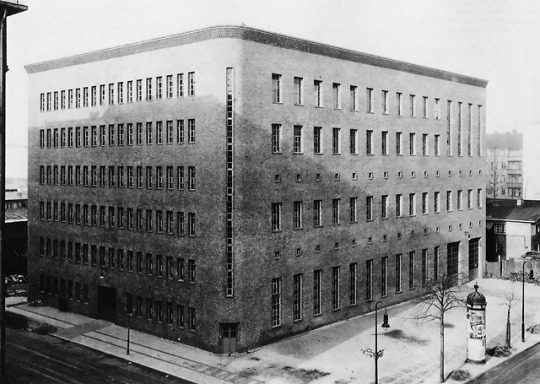

'Abspannwerk Leibnizstraße', former industrial substation, now MetaHaus
Charlottenburg - Berlin, Germany; 1927-29
Hans Heinrich Müller
see map | more information 1, 2, 3, 4
via “Hans Heinrich Müller: 1879-1951, Berliner Industriebauten”; Paul Kahlfeldt; Birkhäuser Verlag; Basel, Berlin, Boston (1992)
#architecture#arquitectura#architektur#architettura#hans heinrich müller#hans heinrich muller#abspannwerk#abspannwerk leibnizstrasse#industrial substation#metahaus#charlottenburg#berlin#deutschland#germany#german architecture
148 notes
·
View notes
Text
Kleine Häuser (4): Ein Spar-Torso in Neukölln
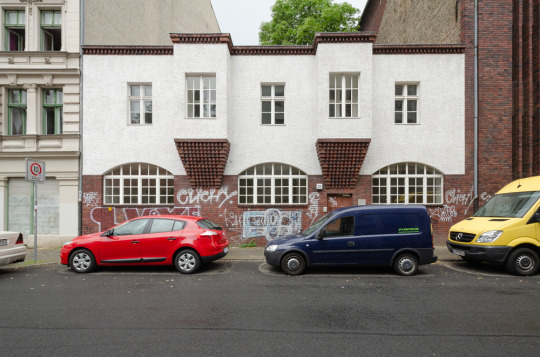
Die Architekturgeschichte ist voll von unvollendeten Bauten. Gerade große, prestigeträchtige Projekte scheiterten oft auf halber Strecke, und nur selten raffte man sich später noch einmal auf, um das Werk zu vollenden (wie beim Kölner Dom).
Weiterlesen auf Haus-und-Gesellschaft.blog.
1 note
·
View note
Text

• Wilhelm Canaris
Wilhelm Franz Canaris was a German admiral and chief of the Abwehr, the German military intelligence service, from 1935 to 1944.
Canaris was born on January 1st, 1887 in Aplerbeck (now a part of Dortmund) in Westphalia, the son of Carl Canaris, a wealthy industrialist, and his wife, Auguste. Canaris believed that his family was related to the 19th century Greek admiral and politician Constantine Kanaris, a belief that influenced his decision to join the Imperial German Navy. However, according to Richard Bassett, a genealogical investigation in 1938 revealed that his family was actually of Northern Italian descent, originally called Canarisi, and had lived in Germany since the 17th century. In 1905, at the age of eighteen, Canaris joined the Imperial Navy and by the outbreak of the First World War in 1914 was serving as an intelligence officer on board the SMS Dresden, a light cruiser he had been assigned to in December 1911.
After the Battle of Más a Tierra, the immobilized Dresden anchored in Cumberland Bay, Robinson Crusoe Island and contacted Chile with regard to internment. While in the bay, Royal Navy ships approached and shelled the Dresden. The crew scuttled the ship. Most of the crew was interned in Chile in March 1915, but in August 1915, Canaris escaped by using his fluency in Spanish. On the way, he called at several ports, including Plymouth in Great Britain. Canaris was then given intelligence work as a result of having come to the attention of German naval intelligence. German plans to establish intelligence operations in the Mediterranean were under way and Canaris seemed a good fit for this role. After being assigned to the Inspectorate of Submarines by the Naval Staff in October 1916, he took up training for duty as a U-boat commander and graduated from Submarine School on 11 September 1917. Canaris spoke six languages with fluency, one of which was English. As a naval officer of the old school, he had great respect for Great Britain's Royal Navy, despite the rivalry between the two nations.
During the German Revolution of 1918–19, Canaris helped organise the formation of Freikorps paramilitary units in order to suppress the Communist revolutionary movements that were attempting to spread the ideals of the Russian Revolution into central European nations. Also during this period, he was appointed to the adjutancy of defence minister Gustav Noske. In 1919, he married Erika Waag, also the child of an industrialist, with whom he had two children. In the spring of 1924, Canaris was sent to Osaka, Japan, to supervise a secret U-boat construction program in direct violation of the Treaty of Versailles. Unfortunately for Canaris, he made some enemies within Germany during the course of his secret business and intelligence negotiations, partially as a consequence of the bankruptcy incurred by the film-maker Phoebus Film in his dealings with Lohmann. At some time in 1928, Canaris was removed from his intelligence post and began two years of conventional naval service aboard the pre-Dreadnought battleship Schlesien, becoming captain of the vessel in December 1932. Just two months later, Adolf Hitler became Germany's new Chancellor. Enthused by this development, Canaris was known to give lectures about the virtues of Nazism to his crew aboard the Schlesien.
One month before Hitler's annexation of Austria (known as the Anschluss), Canaris put the Abwehr into action, personally overseeing deception operations designed to give the Austrians the impression of what appeared to be substantial German military preparations for an impending act of aggression. After the outbreak of war between Germany and Poland in September 1939, Canaris visited the front, where he saw the devastation rendered by the German military—seeing Warsaw in flames nearly brought him to tears and it was reported that he exclaimed, "our children's children will have to bear the blame for this". He also witnessed examples of the war crimes committed by the Einsatzgruppen of the SS, including the burning of the synagogue in Będzin with 200 Polish Jews inside. Moreover, he received reports from Abwehr agents about several incidents of mass murder throughout Poland. Canaris visited Hitler's headquarters train on September 12t, 1939, to register his objection to the atrocities. Canaris told chief of the Oberkommando der Wehrmacht (OKW) Wilhelm Keitel about the "extensive shootings ... and that the nobility and clergy were to be exterminated" to which Keitel informed him that Hitler had already "decided" the matter. After this experience Canaris began working more actively to overthrow Hitler's régime, although he also cooperated with the SD to create a decoy. This made it possible for him to pose as a trusted man for some time. He was promoted to the rank of full Admiral in January 1940.
With his subordinate Erwin Lahousen, he attempted in the autumn of 1940 to form a circle of like-minded Wehrmacht officers. At the time, this had little success. When the OKW decrees regarding the brutal treatment of Soviet prisoners of war related to the Commissar Order came to the attention of Canaris in mid-September 1941, he registered another complaint. Keitel reminded Canaris that he was thinking in terms of "chivalrous war", which did not apply, as this was "a matter of destroying a world ideology". Canaris had also worked to thwart the proposed Operation Felix, the German plan to seize Gibraltar. At a conference of senior officers in Berlin, in December 1941, Canaris is quoted as saying "the Abwehr has nothing to do with the persecution of Jews. ... no concern of ours, we hold ourselves aloof from it".
In June 1942, Canaris sent eight Abwehr agents to the East Coast of the United States as part of Operation Pastorius. The mission was to sabotage American economic targets and demoralise the civilian population inside the United States. However, two weeks later, all were arrested by the FBI thanks to two Abwehr agents who betrayed the mission. Because the Abwehr agents were arrested in civilian clothes, they were subject to court martial by a military tribunal in Washington, D.C. All were found guilty and sentenced to death. Due to the embarrassing failure of Operation Pastorius, no further sabotage attempt was ever made in the United States. After 1942, Canaris visited Spain frequently and was probably in contact with British agents from Gibraltar. In 1943, while in occupied France, Canaris is said to have made contact with British agents. In Paris, he was conducted blindfolded to the Convent of the Nuns of the Passion of Our Blessed Lord, 127 Rue de la Santé, where he met the local head of the British Intelligence Services, code name "Jade Amicol", in reality Colonel Claude Olivier. Canaris wanted to know the terms for peace if Germany got rid of Hitler. Churchill's reply, sent to him two weeks later, was simple: "Unconditional surrender".
Canaris also intervened to save a number of victims from Nazi persecution, including Jews, by getting them out of harm's way; he was instrumental, for example, in getting five hundred Dutch Jews to safety in May 1941. Many such people were given token training as Abwehr "agents" and then issued papers allowing them to leave Germany. However the evidence that Canaris was playing a double game grew and, at the insistence of Heinrich Himmler, Hitler dismissed Canaris and abolished the Abwehr in February 1944. Previous areas once the responsibility of the Abwehr were divided between Gestapo chief Heinrich Müller and SS-Brigadeführer Walter Schellenberg. Some weeks later, Canaris was put under house arrest. He was released from house arrest in June 1944 to take up a post in Berlin as the head of the Special Staff for Mercantile Warfare and Economic Combat Measures (HWK). The HWK coordinated resistance to the Allied economic blockade of Germany.
Canaris was arrested on July 23rd, 1944 on the basis of the interrogation of his successor at Military Intelligence, Georg Hansen. Schellenberg respected Canaris and was convinced of his loyalty to the Nazi regime, even though he had been arrested. Hansen admitted his role in the July 20 plot but accused Canaris of being its "spiritual instigator". No direct evidence of his involvement in the plot was discovered, but his close association with many of the plotters and certain documents written by him that were considered subversive led to the gradual assumption of his guilt. Two of the men under suspicion as conspirators who were known in Canaris' circle shot themselves, which incited activity from the Gestapo to prove he was, at the very least, privy to the plan against Hitler. Investigations dragged on inconclusively until April 1945, when orders were received to dispose of various remaining prisoners in July 20 plot. Canaris' personal diary was discovered and presented to Hitler in early April 1945, implicating him in the conspiracy. Canaris was placed on trial by an SS summary court. He was charged with and found guilty of treason. He was sentenced to death.
Canaris was led to the gallows naked and executed on April 9th, 1945 at the Flossenbürg concentration camp, just weeks before the end of the war. A prisoner claimed he heard Canaris tap out a coded message on the wall of his cell on the night before his execution, in which he denied he was a traitor and said he acted out of duty to his country. Erwin von Lahousen and Hans Bernd Gisevius, two of Canaris' main subordinates, survived the war and testified during the Nuremberg trials about Canaris' courage in opposing Hitler. Canaris died at the age of 58.
#ww2#biography#second world war#world war 2#world war ii#german history#german navy#spy history#unsung hero
16 notes
·
View notes
Photo

Hans Heinrich Müller, Stützpunkt Marienburger Straße, 1927
34 notes
·
View notes
Text
Museum Insel Hombroich
Wo das Ungeplante wachsen kann !
Kunst und Natur zusammen, es ist nicht ein Widerspruch!
Im diesen Museum sind Kunst und Natur untrennbar verbunden. Die Bäume strecken ihre kahlen Zeige in den Himmel:

Und es gibt viele Gänse die, sanft auf dem Wasser landen, und auch Anselm die,die letze Früchte essen. Alle Tiere lassen die Landschaft auf sich wirken.
Aber nicht nur Natur es gibt in diesen Museum. Drinnen der Gebaude kann man Werke von Hans Arp, Kurt Schwitters und Yves Klein, Matisse und Rembrandt, mit Kunst aus Kambostcha und Peru admirieren. Auch der Maler Gottard Graubier dort lebte. Er hat auch das Gesamtkunstwerk geschaffen, in dem er die Kunst in den Räumen arrangierte.
Die düsseldorfer Kunstsammlers Karl-Heinrich Müller hat die Insel als Museum in 1987 eröffen, Er hat Bäume, Sträucher und wiche Gräser um den geometrischen Pavillons gut zu gelten.
Jetz ruhrt Müller sich unter den Linden, weil er eine Vision hatte. Er hat diesen Idyll nur etwa 20 Kilometer der grösste Tagebau der Region entfernt, stellt. Die weissen Wolkenberge die aus den mächtigen Kühltürmen der Kraftwerke steigen, bestimmen leich. Aber er hat die Gebäude aus dem frühen 19 Jahrhundert gefunden.
Im diesen Museum der Mensch steht hier nicht im Mittelpunkt, der Museum ist eine Lebensraum für Pflanzen, Tiere und Menschen.
https://www.inselhombroich.de/de
7 notes
·
View notes